I know; you probably have a colander and a strainer sitting on a shelf in your kitchen right now, but you might not know exactly what they’re called. And if you’re new to cooking, getting familiar with these kitchen essentials is a must. I mean, imagine hosting a big dinner and not knowing the names of your own tools, total boomer move, right? But hey, no judgment! In this blog guide, I’m breaking down the difference between a colander vs strainer. By the end, you’ll not only know which one to use but also discover some top picks to add to your kitchen lineup.
What Are Colanders?
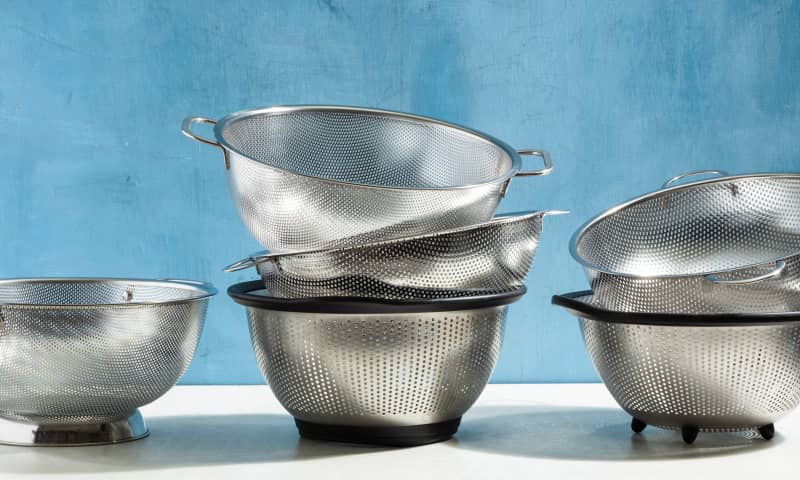
Credit: americastestkitchen.com
So, you’ve probably seen one sitting in your kitchen cabinet, a big bowl with holes and handles? Yeah, that’s your colander!
It’s one of those trusty tools we reach for without thinking, especially when dealing with hot water or large batches of food. When you’re comparing a colander vs strainer, this one’s built for handling volume and heat.
Here’s what colanders are used for:
- Draining cooked pasta or boiled veggies
- Rinsing large amounts of fruits and vegetables
- Holding washed produce while it dries
- Sifting out excess liquid from canned beans or lentils
In the debate of colander vs strainer uses, colanders shine when you’re working with bulkier ingredients and need something sturdy and quick-draining. If you’re ever torn between a colander vs a pasta strainer, just know this tool’s your go-to for the classic spaghetti dump!
Now, after using so many colanders during my cooking sessions, I have come up with the top 3 picks. Let’s discuss each one by one.
🥇 Best Overall Pick
EXCELSTEEL Heavy Duty Colander

Credit: amazon.com
Meshy Details
- Rust-resistant stainless steel build
- Sturdy base for stability
- Side handles for easy lifting
- Dishwasher safe
Style
Heavy Duty
Capacity
5-quart
Key Highlights
- Durable and heavy-duty kitchen colander strainer for everyday use
- Wide base adds balance, great for large batches of pasta or rice
- Simple to clean and maintain
- Perfect for those exploring the difference between a colander and a strainer in real use
👩🍳 My Take
So, this was the first colander I ever picked up, and it’s still going strong. I mostly use it for draining pasta, but it handles everything from rinsing leafy greens to draining canned beans. It’s sturdy, lightweight, and the wide base means no tipping over. People, if you’re ever stuck in the colander vs strainer dilemma, this one’s clearly made for volume and ease.
Why Should You Pick It?
If you’re wondering about the colander vs strainer for pasta or even colander vs strainer for rice, this is your go-to. It’s strong, dependable, and super practical for daily kitchen routines. I can say that it’s a perfect example of how a good colander strainer used for draining, rinsing, and prepping can make kitchen tasks a breeze.
🥈 Runner-Up Pick
OXO Good Grips Stainless Steel 5 qt.
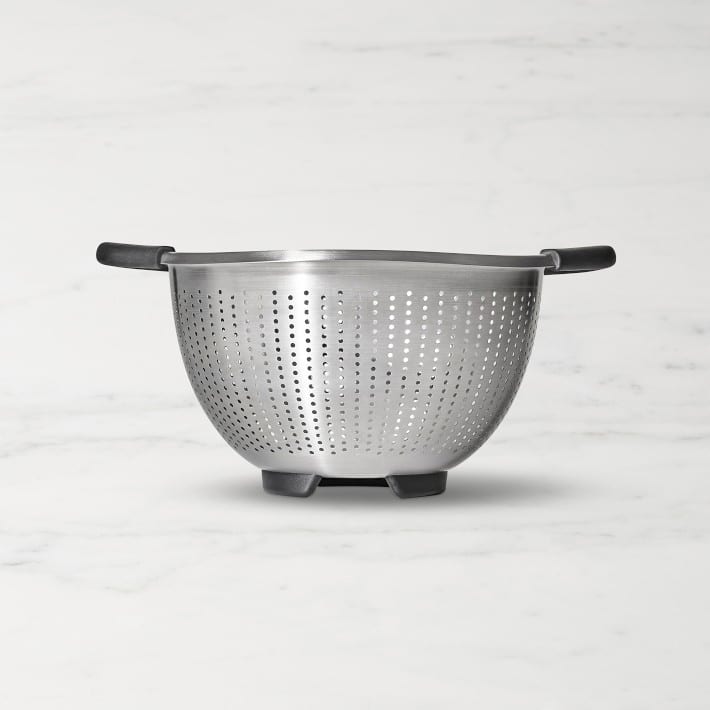
Credit: williams-sonoma.com
Meshy Details
- Micro-perforated design
- Rust-proof 18/10 steel
- Sturdy ring base
- Captures small grains
Style
Non-slip handles
Capacity
4.7 liters
Key Highlights
- Smart grip handles make it easy to hold, even when full
- Elevated base ensures water drains quickly, no pooling
- Durable enough for frequent kitchen use
- Great option when choosing between a colander vs mesh strainer
👩🍳 My Take
This was the second colander I brought into my kitchen. It’s a bit fancier, and I’m not mad about it. The soft-grip handles make draining boiled pasta way easier, especially when the pot’s heavy. I love that the base keeps it lifted off the sink. It just feels like a well-designed tool for an everyday colander strainer used for kitchen prep.
Why Should You Pick It?
If you’re debating colander vs strainer and want something ergonomic, this is it. The elevated base and grip handles make a real difference when draining heavier foods like rice or potatoes. It’s also a solid pick if you’re upgrading from a basic colander and strainer set. Strong, modern, and totally built for busy kitchens, it earns its spot.
🥉 Best Compact Pick
Gulex Colander Stainless Steel 3-Quart
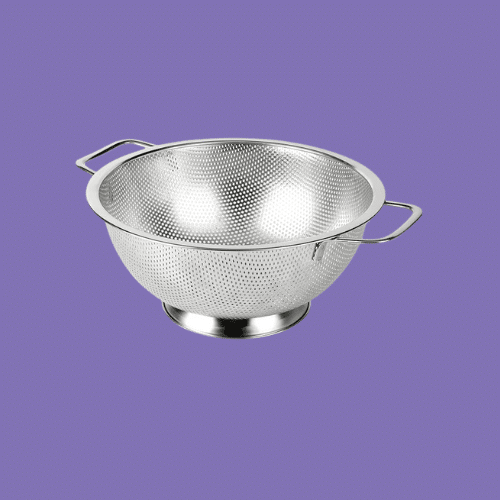
Credit: amazon.com
Meshy Details
- Built-in raised base
- Compact 3-quart size
- Easy-grip side handles
- Ideal for small batches
Style
Round base
Capacity
3 quarts
Key Highlights
- Perfect size for small kitchens or solo meals
- Holds up well for regular kitchen uses
- Ideal when comparing a colander vs strainer for quick rinsing
- Compact but tough; handles pasta, veggies, or even small batches of rice
👩🍳 My Take
Folks, this is the last colander I want to discuss with you, and for good reason. Believe me, it’s the one I grab for quick jobs. When I’m just rinsing berries or draining a little pasta, it’s all I need. It’s light, it fits in any cabinet, and it gets the job done. Great for small portions or tight kitchen spaces.
Why Should You Pick It?
Confused? Let me help you. If you’re choosing between a full-size and compact colander vs strainer, this one’s your no-fuss go-to.
It’s affordable, sturdy, and super easy to clean. Whether you’re cooking for one or want a backup in your colander and strainer set, this does the trick. Don’t overthink it; this one’s for the everyday, quick-win moments in the kitchen.
These are my top picks for colanders.
What Are Strainers?
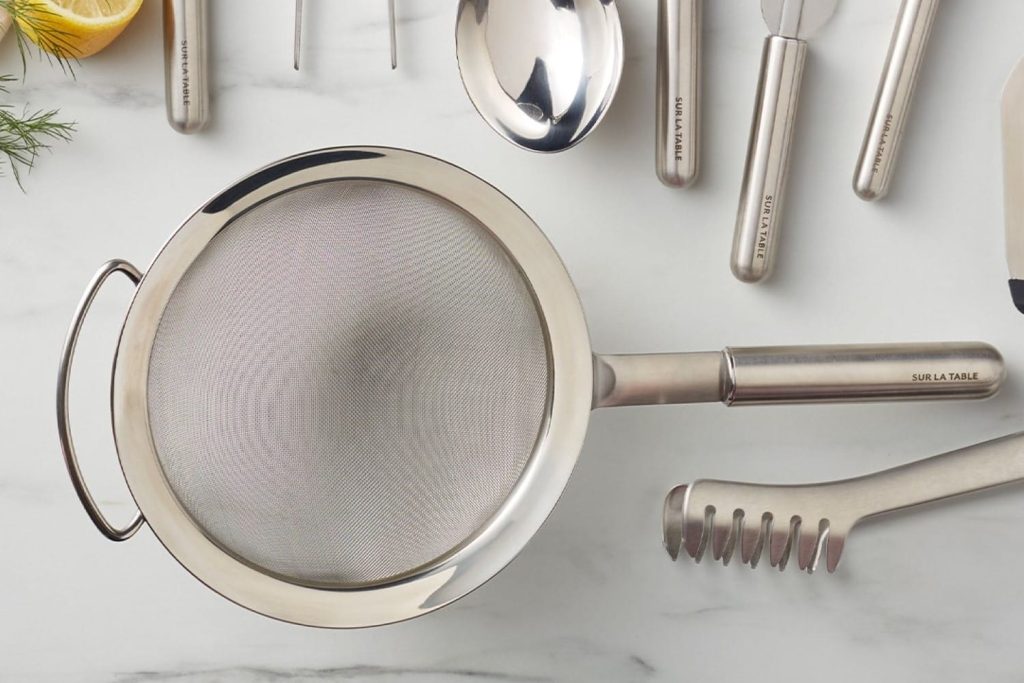
Credit: learn.surlatable.com
Alright, let’s talk about strainers. These are the fine-mesh heroes of the kitchen; smaller, lighter, and perfect for detail work. If a colander is the muscle, a strainer is the finesse. In the colander vs strainer debate, this one’s all about control and precision.
Here’s what strainers are used for:
- Rinsing rice, quinoa, or other small grains
- Sifting flour or powdered sugar
- Straining tea, sauces, or soup stock
- Catching seeds or pulp when juicing citrus
- Draining canned goods without losing small bits
We will now discuss my top picks for strainers.
🥉 Best Compact Pick
Rosle Fine-Mesh Kitchen Strainer
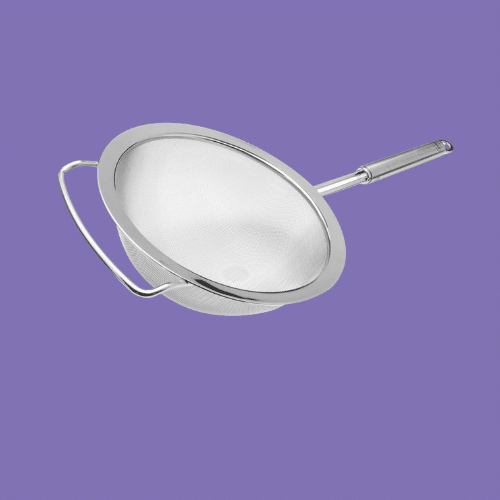
Credit: surlatable.com
Meshy Details
- 18/10 stainless steel
- Easy to clean
- Rust-resistant build
- Lightweight and compact
Style
Fine-mesh
Size
6.3-inch diameter
Key Highlights
- Designed for finesse, perfect for sauces, stocks, and dusting sugar
- Comfortable grip for long kitchen sessions
- Great when comparing a coa lander vs a mesh strainer
- Built for anyone who values pro-grade kitchen tools
👨🍳 My Take
The first time I used this strainer, I was making lemon curd, and it caught every bit of zest and pulp. No splatter, no mess. It fits perfectly over bowls, and the handle doesn’t get hot, even with boiling liquid. I didn’t expect to love a strainer, but here we are.
Why Should You Pick It?
If you’re caught in the colander vs strainer decision, this is what you want for detail work. It’s not bulky. It’s not clunky. It’s sleek, strong, and easy to clean. For anyone who cooks regularly or loves sauce perfection, this strainer is a must in your kitchen colander strainer collection.
🥈 Thermo Plastic Pick
Kafoor 9" Large Fine Mesh Strainer
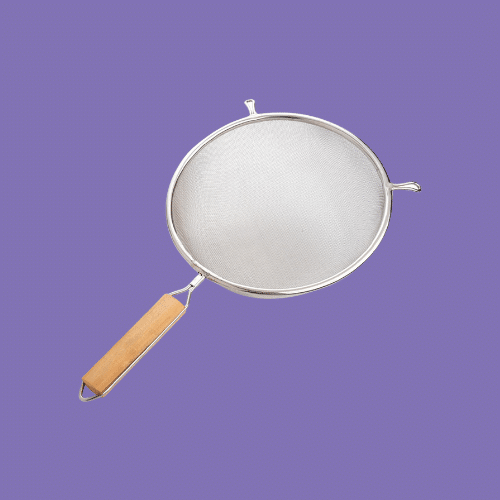
Credit: segundoasegundo.com
Meshy Details
- BPA-free handle, heat resistance
- Extra-wide rim for easy placement
- Fine mesh for grains and sauces
- Lightweight but durable design
Style
Wide rim
Size
9-inch diameter
Key Highlights
- Flexible Thermo Plastic Rubber handle stays cool while straining hot liquids
- Great for rinsing rice, draining pasta water, or filtering out pulp
- Ideal when comparing a coa lander vs a strainer for rice or finer foods
- A smart addition to your colander and strainer set for versatile use
👩🍳 My Take
We can say that it’s the one I use the most now. I was making ramen and used it to strain broth. The handle didn’t get hot, and it balanced well over the pot. It’s bigger than I expected, but in a good way. I even used it to rinse basmati rice without a single grain slipping through.
Why Should You Pick It?
Okay, hear me out! If you’re deciding between a colander vs a mesh strainer, and need something flexible and fuss-free, this is your pick. It’s sturdy, easy to clean, and comfortable to use. Plus, it fits right in for both big and small kitchen jobs; perfect for everyday cooks like us. And while you’re at it, don’t miss our picks for the best oil frying grill pans that elevate any stovetop setup.
🥉 Best Budget-Friendly Pick
Walfos 6.3 Inch Fine Mesh Strainer
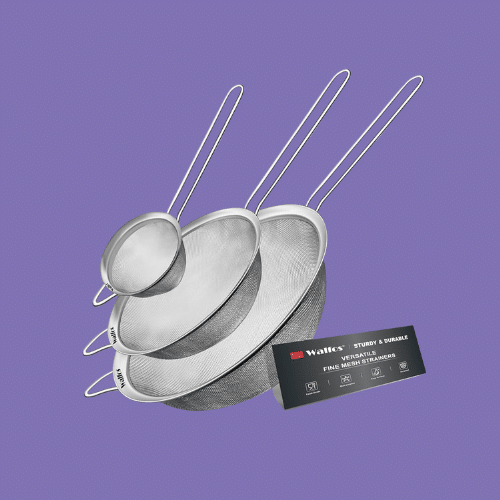
Credit: amazon.com
Meshy Details
- Lightweight and easy to handle
- Reinforced handle for better grip
- Fine mesh ideal for flour or tea
- Works great over cups, or pots
Style
Fine mesh stainless
Size
6.3-inch diameter
Key Highlights
- Basic, compact design that fits into any drawer or colander and strainer set
- Fine enough to filter sauces, dust sugar, or rinse delicate grains
- Handy when deciding between a strainer vs colander for small jobs
- Works well for both hot liquids and dry ingredients
👩🍳 My Take
Let’s discuss our last strainer purchase, and honestly, it’s become my grab-and-go tool. I used it for dusting powdered sugar over pancakes, and it gave such a fine, even layer. I’ve also strained lemon juice with it; no seeds got through. It’s super light and easy to rinse off afterward.
Why Should You Pick It?
If you’re assembling a full colander and strainer set, this one’s perfect for finishing tasks. It won’t take up space, but you’ll use it more than you expect. Especially when it comes to little jobs that don’t need your heavy-duty gear. It’s budget-friendly, reliable, and proves that sometimes, simple really is best.
And if you’re all about efficiency in the kitchen, check out our guide on the best kitchen tools; your next favorite gadget might already be on that list!
That’s all! Now, the real question is which one should you choose? For your ease, I have given an extensive comparison table below for colander vs strainer.
Design
Colander
- Bowl-shaped with large holes
Strainer
- Fine mesh or small holes with a handle
Best For
Colander
- Draining pasta, rinsing vegetables, boiled foods
Strainer
- Straining liquids, rinsing rice, sifting dry ingredients
Precision
Colander
- Low – ideal for bulk draining
Strainer
- High – catches seeds, skins, & particles
Size
Colander
- Large, fits over sink or bowl
Strainer
- Small to medium, fits over cups or pots
Material
Colander
- Stainless steel, plastic, or silicone
Strainer
- Fine mesh (stainless steel or nylon)
Typical Use Case
Colander
- Dumping a pot of spaghetti
Strainer
- Filtering lemon juice or tea
Storage
Colander
- Takes more space
Strainer
- Easy to store in drawers
Quick Tips for Using Colanders & Strainers
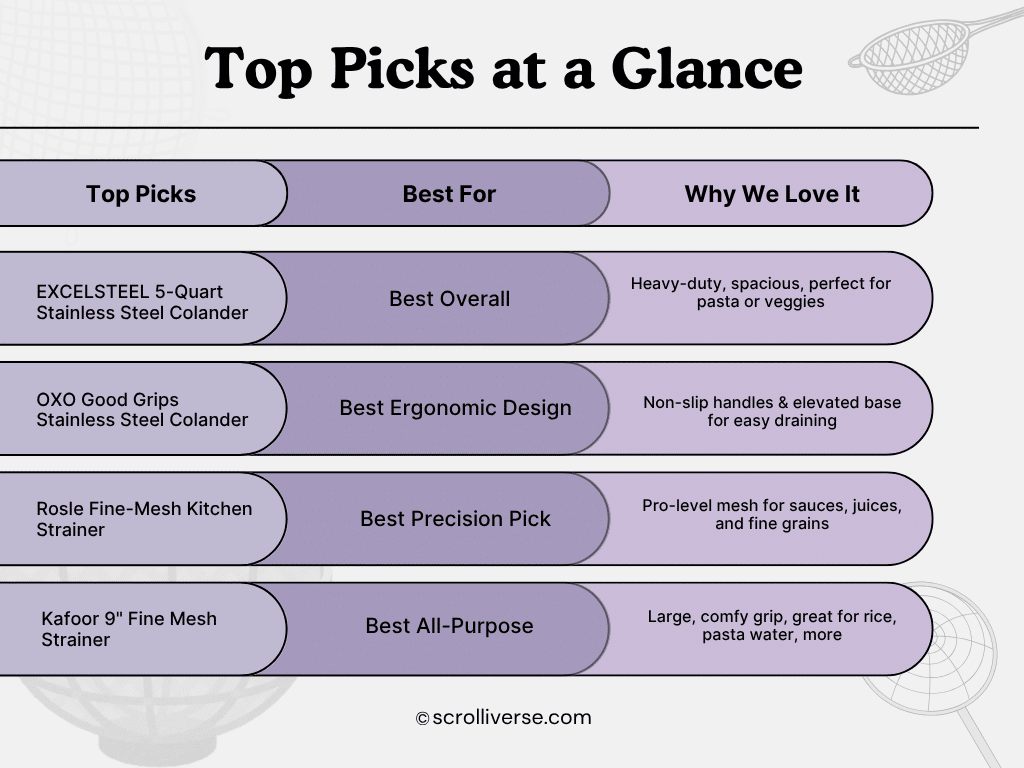
Want to make the most of your kitchen tools? Here are a few quick tips that’ll make your colander or strainer work even harder for you:
- Always rinse before use – Even if it’s clean, a quick rinse clears out dust or leftover bits.
- Match the job to the tool – Use a colander for pasta, and a strainer for rice or liquids.
- Use over a bowl – Straining broth or juice? Place your strainer over a bowl to catch every drop.
- Let it drain fully – Don’t rush! Give your colander time to release all the water, especially with heavier foods.
- Dishwasher-safe? Use it! – Most stainless steel tools are dishwasher-friendly—clean up with zero effort.
- Stack smart – If you own a colander and strainer set, nest them to save cabinet space.
These little tips can save you mess, time, and even overcooked pasta!
📝 Final Take
At the end of the day, both a colander and a strainer deserve a spot in your kitchen. They may look similar, but they’re built for different tasks, and trust me, once you start using the right one for the right job, cooking just feels easier.
Frequently Asked Questions
Let’s now go through the questions chefs ask about colander vs strainer.
What is the difference between a colander and a strainer?
A colander has larger holes and is used for draining bulkier foods like pasta or vegetables. A strainer has a fine mesh and is better for filtering small particles from liquids or rinsing fine grains like rice.
Can I use a strainer instead of a colander?
Yes, but only for smaller portions. A strainer works for rinsing rice or draining a small can of beans, but for larger jobs like draining boiled pasta, a colander is much more efficient.
What is a strainer used for in the kitchen?
Strainers are super versatile! They’re used for straining sauces, tea, juice, or soup stock, as well as sifting flour or powdered sugar. Think of it as your go-to tool for anything that needs fine filtering.
Are colanders and strainers the same thing?
Not quite. While both are used to separate solids from liquids, the key difference is in the size of the holes and their purpose. Colanders are for bulk draining; strainers are for precision tasks.
Should I buy a colander or a strainer first?
If you’re new to cooking, start with a colander; it covers more basic kitchen tasks. But if you’re into baking, juicing, or cooking finer grains, a fine-mesh strainer might be your first must-have.

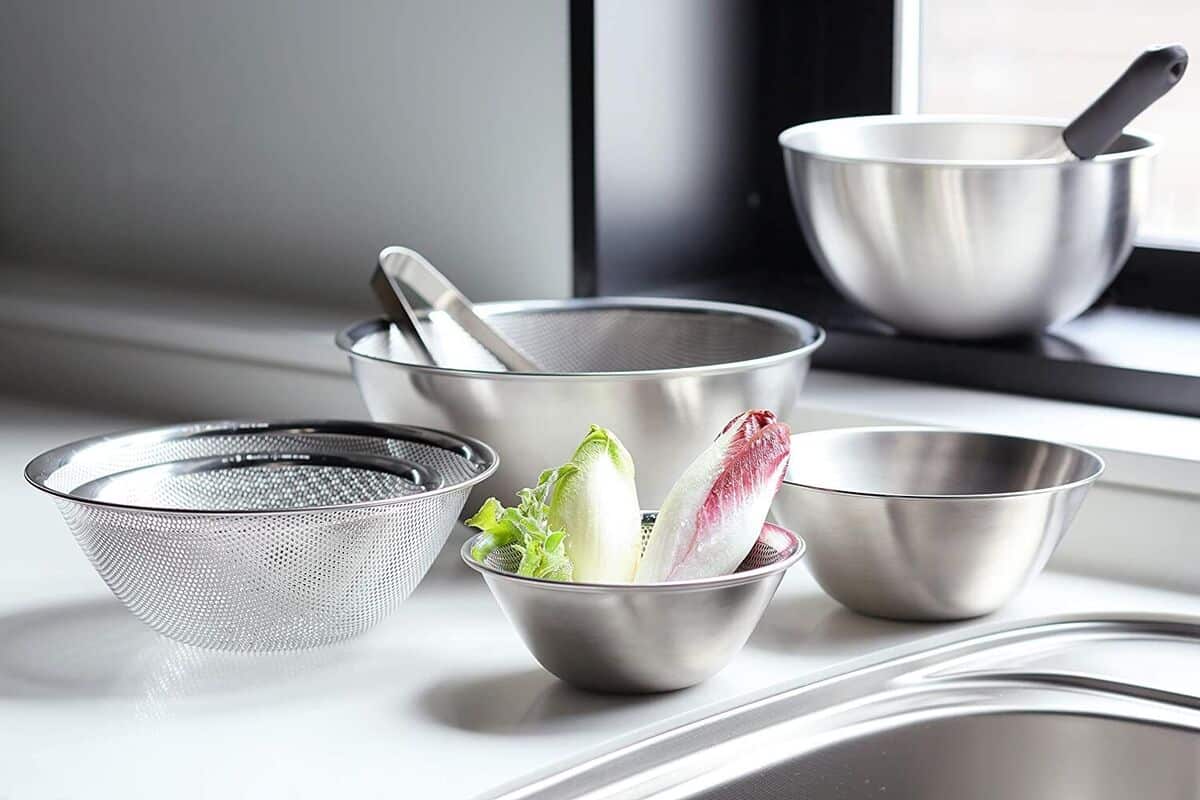
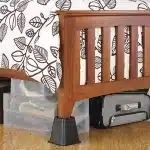

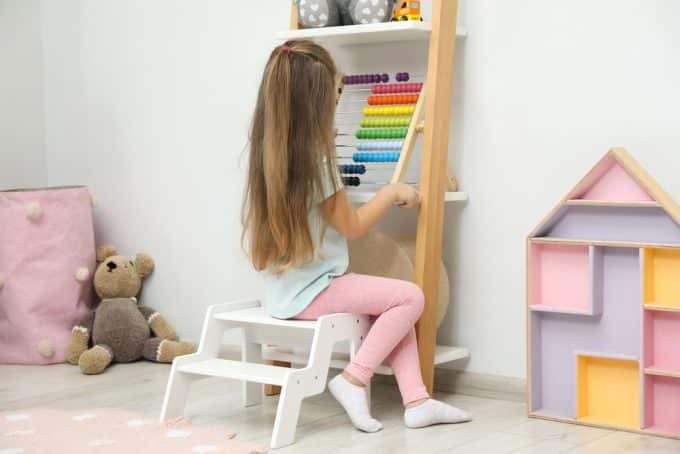







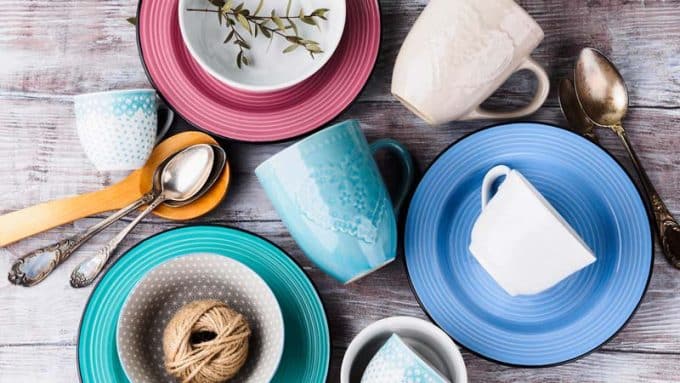
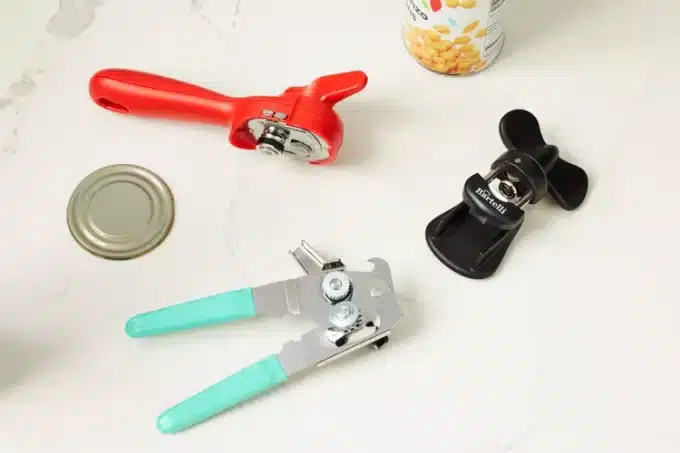
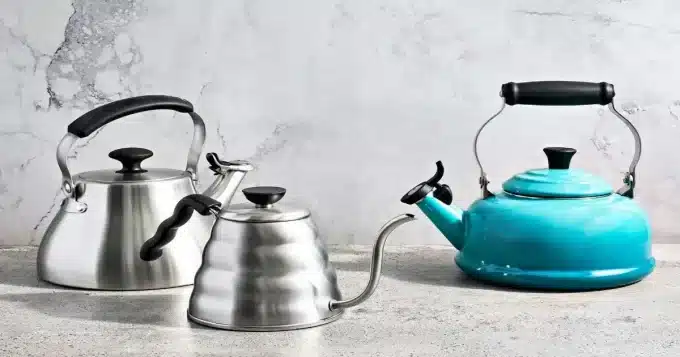
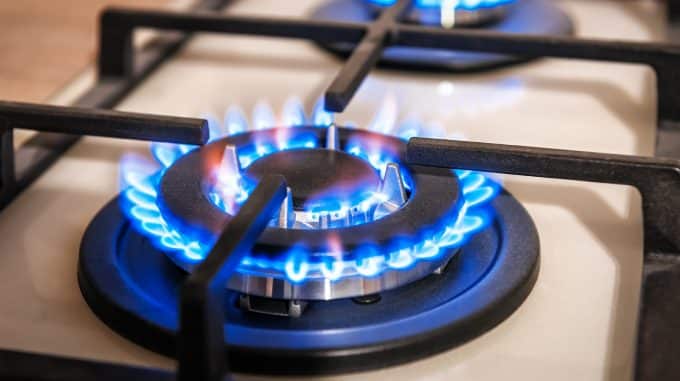




Leave a comment